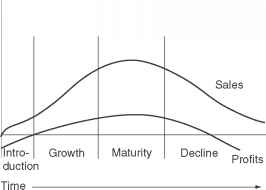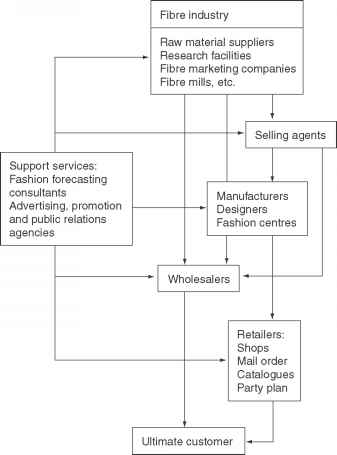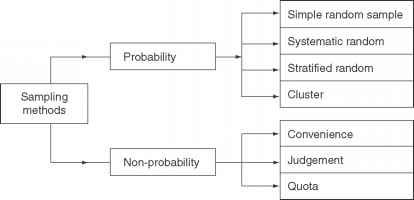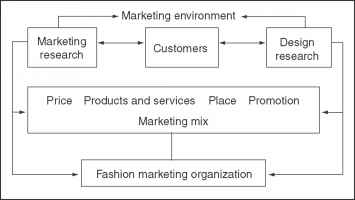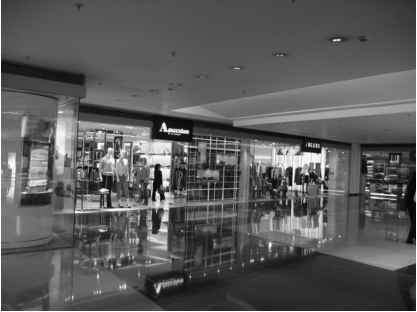Fashion Marketing
The fashion marketing concept
There is another way to view the relationship between marketing and design, and this is termed the fashion marketing concept. That good fashion design only requires sufficient promotion to succeed is a view Figure 1.3 The fashion marketing concept. applicable to a very limited number of businesses - usually those producing expensive garments for an elite market. The alternative view of fashion design as a function of marketing research fails to recognize either that many people do not know what...
Ethical issues in fashion marketing
The practice of fashion marketing is often criticized. These criticisms can be classified into two types, the micro-issues and the macro-issues. Micro-issues concern particular products and services where consumers may feel that they have not been fairly treated or that they have been misled. Most customers have bought clothing that has fallen below expectations by, for example, coming apart at the seams or shrinking in the wash. These problems may occur due to poor quality control or at worst...
The fashion product life cycle
The concept of the product life cycle is based on the proposal that all products have a finite 'life cycle' that can be plotted over a given period using the biological analogy of growth, development and decline. It proposes that all products will go through four major stages, namely introduction into the marketplace, growth, maturity and decline. However, it has already been pointed out that the nature of products in the fashion industry varies according to the rate, extent and timescale of...
Geodemographics
Related to social class is a newer system of classifying consumers based upon where they live. A small number of proprietary systems exist based upon the census and categories of neighbourhoods. One such system is ACORN, which stands for A Classification Of h Residential Neighbourhoods and is owned by CACI Pinpoint is F another. These systems are derived from statistical analysis of census h variables to discover residential areas, usually census enumeration n districts comprising about 150...
Size of the fashion market
All three levels of the market have shown some growth in domestic clothing demand in recent years. Growth of the total UK market for clothing has grown by over 16 from 1994 to 2004 and retail sales for 2006 are predicted to be nearly 50 billion Table 2.2 . UK imports now greatly exceed exports, having increased from 9.1 billion to 11.5 billion from 2001 to 2005 with the main traders being Hong Kong, China and Turkey see Table 2.1 . UK exports have remained steady at about 2.5 billion per annum...
Consumer motivation
Motivation is the inner force that drives and energizes consumers towards goals. Motivation incorporates need arousal, causing the drive that leads instrumental behaviour to reduce the drive. Consumer motivation is a complex matter to understand for many reasons. First, motives are inferred, a consumer motive cannot be seen or observed what is noted is behaviour and then an assumption about the underlying behaviour is made. An important distinction should be made between merely describing...
Choice of a sampling method
The two main types of sampling method - probability methods and non-probability methods - are shown in Figure 4.3. Figure 4.3 Types of sampling method. Figure 4.3 Types of sampling method. Statistically speaking, these are the best types of sampling method as each respondent has a known chance of being selected, so bias is minimized. They also allow the accuracy of the results to be estimated statistically. Sometimes probability sampling methods are referred to generically as 'random sampling'...
An overview of the fashion marketing process
Fashion marketing can be viewed as a process and Figure 1.4 illustrates that process. It also gives an indication of the structure of this book and how various parts link together. All firms operate within a wider commercial environment that influences their activities. Changes in value added tax may inhibit demand for certain garments whereas a fall in unemployment may stimulate demand for workwear. These two simple examples illustrate how changes in the marketing environment can have...
Classifying products with a fashion element
Although the categories above do apply to certain items of clothing in the fashion industry, they are slightly limited in use when one is trying to analyse buying motives and methods. It is probably more accurate therefore to classify tangible fashion products slightly differently, categorizing them as classics, fashions or fads. It is possible to use the term classic in several contexts. In terms of 'bundles of utilities', classics can usually be seen as the midpoint compromise of any style,...
